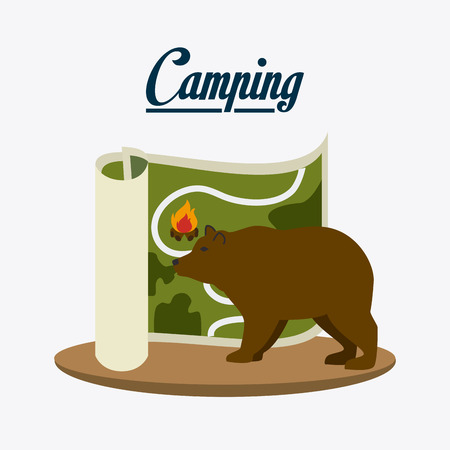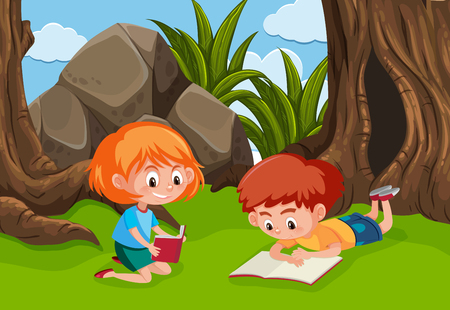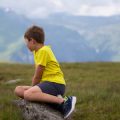1. Planning Ahead: Choosing the Right Campground for Kids
When it comes to camping with kids, choosing the right campground can make or break your trip. Not all campgrounds are created equal, and some are definitely more family-friendly than others. Picking the right spot means less stress for parents and more fun for the kids.
Look for Family-Friendly Campgrounds
Start by searching for campgrounds that specifically advertise themselves as family- or kid-friendly. These places often have kid-safe environments, quiet hours, and a community vibe that makes families feel welcome. National Parks, State Parks, and many private campgrounds across the U.S. offer excellent options.
Key Features to Consider
Here are some important amenities and features to look out for when choosing a campground:
| Amenity | Why It Matters for Families |
|---|---|
| Playgrounds | Great for keeping young kids entertained while adults set up camp or relax. |
| Flush Toilets & Showers | Makes hygiene easier, especially with toddlers or younger children. |
| Shaded Campsites | Keeps your site cooler during hot summer days—important for baby naps! |
| Nearby Hiking Trails | Look for easy or beginner-level trails suitable for short legs. |
| Swimming Areas or Splash Pads | Adds fun water play without needing to leave the campground. |
How to Book in Advance
Once youve narrowed down your options, book early—especially during peak seasons like summer vacation and long weekends. Many popular family campgrounds fill up months in advance. Use websites like Recreation.gov (for federal sites), ReserveAmerica.com (for state parks), or individual campground websites to check availability and secure your reservation.
Pro Tip:
If youre new to camping or traveling with little ones, consider staying at a campground close to home. This way, if things don’t go as planned, you’re not far from familiar comforts.
Bonus Checklist: What Makes a Great Family Campsite?
| Checklist Item | Check Before Booking? |
|---|---|
| Campsite near restrooms but not too close | ✓ |
| No steep drop-offs or water hazards nearby | ✓ |
| Flat area for pitching tents or parking RVs | ✓ |
| Quiet hours enforced by campground staff | ✓ |
By planning ahead and choosing the right campground, youre setting the stage for a fun and safe outdoor adventure that your whole family will remember.
2. Packing Smart: Gear and Essentials for Family Camping
Packing for a camping trip with kids takes more than just tossing a tent and some snacks into the car. When youre adventuring with little ones, being well-prepared makes all the difference between a fun weekend and a stressful one. Here’s how to pack smart by breaking down the essentials into five key categories: shelter, clothing, first aid, food, and entertainment.
Shelter: Creating a Cozy Basecamp
A comfortable and safe sleeping space is crucial for helping kids feel secure in the great outdoors.
| Item | Why Its Important |
|---|---|
| Family-sized tent | Gives everyone enough room to sleep comfortably and store gear. |
| Footprint or tarp | Protects your tent floor from moisture and sharp objects. |
| Sleeping bags (kid-sized) | Keeps kids warm; child-sized bags retain heat better. |
| Sleeping pads or air mattresses | Adds comfort and insulation from the cold ground. |
| Blankets and pillows | Makes sleeping feel more like home for younger children. |
Clothing: Dressing for All Conditions
The weather can change quickly outdoors, so layering is key. Make sure you pack extra outfits in case of spills, dirt, or unexpected rain.
| Clothing Item | Details |
|---|---|
| Base layers | Moisture-wicking tops and leggings to keep kids dry and warm. |
| Fleece or hoodie | For warmth during chilly mornings or evenings. |
| Waterproof jacket | Keeps them dry if it rains unexpectedly. |
| Sturdy shoes/hiking boots | Protects feet on trails or around camp. |
| Extra socks & underwear | You’ll never regret bringing extras! |
First Aid: Be Ready for Bumps and Bruises
Kids are adventurous—and sometimes clumsy—so having a solid first aid kit is essential. Customize yours for your family’s needs.
- Bandaids of various sizes (including fun designs for kids)
- Antiseptic wipes and antibiotic ointment
- Tweezers for splinters or ticks
- Sunscreen (SPF 30+)
- Bug spray (DEET-free options for young children)
- Allergy meds or inhalers if needed
- A digital thermometer and children’s pain reliever
Food: Fueling Your Little Explorers
A well-fed camper is a happy camper! Keep meals simple but satisfying, and dont forget snacks—it seems kids are always hungry when theyre outside.
| Meal Type | Ideas That Kids Love |
|---|---|
| Breakfast | Pancake mix, instant oatmeal, fruit, breakfast bars |
| Lunch | Deli sandwiches, wraps, cheese sticks, trail mix |
| Dinner | Hot dogs, foil packet meals, mac & cheese, grilled veggies |
| Snacks | Smores supplies, granola bars, apple slices, crackers |
Don’t Forget:
- A cooler with ice packs to keep perishables fresh
- Bottled water or refillable water jugs (hydration is key!)
Entertainment: Keeping Kids Engaged at Camp
The beauty of nature does most of the entertaining—but it’s still smart to pack a few kid-friendly activities for downtime or rainy days.
- Nature scavenger hunt checklist (you can print these ahead of time)
- Bubbles, glow sticks, Frisbees, or balls for open space playtime
- A deck of cards or small board games for the picnic table
- Campsite crafts like friendship bracelets or coloring books with crayons
- Kid-safe binoculars or magnifying glasses for nature exploring
Packing smart ensures your family has everything they need without overloading your vehicle. With these essentials ready to go, youre setting up your camping trip for comfort, fun, and peace of mind—for both you and your little campers!

3. Keeping Kids Safe in the Outdoors
When camping with kids, safety should always be a top priority. The outdoors is full of adventure, but it also comes with some risks—especially for little ones who are still learning how to navigate nature. From wildlife to campfire safety, here are some must-know basics to help you keep your children safe while having fun.
Wildlife Awareness
Teach your kids to respect wildlife from a distance. Explain that animals in the wild aren’t like pets and shouldn’t be approached or fed. Make noise while hiking to avoid surprising animals, and store food securely away from tents to avoid attracting curious critters.
Key Wildlife Safety Tips
| Do | Dont |
|---|---|
| Keep food in bear-proof containers or hang it from a tree | Leave snacks out in the open or inside your tent |
| Teach kids not to approach or feed animals | Assume small animals are harmless |
| Make noise on hikes to alert animals of your presence | Let kids wander off trails alone |
Setting Boundaries and Rules
Before you even pitch your tent, establish clear boundaries with your kids. Let them know where they can explore and where they shouldn’t go without an adult. Use visible landmarks like trees or rocks as natural boundary markers. Go over campsite rules together so everyone knows whats expected.
Campsite Boundary Ideas for Kids
- The Tent Zone: Only enter or exit the tent with an adults permission.
- The Fire Circle: Stay at least three feet away from the campfire unless with an adult.
- The Buddy Rule: Never wander off alone—always have a buddy.
Using Insect Repellent Properly
Bugs can be more than just annoying—they can carry diseases like Lyme disease or West Nile virus. Choose a kid-safe insect repellent containing DEET (10-30%) or picaridin, and apply it according to the label instructions. Avoid spraying hands, eyes, and mouth areas.
Quick Bug Safety Tips:
- Avoid scented lotions or soaps before heading outdoors—they attract insects.
- Dress kids in light-colored clothing and tuck pants into socks when hiking through tall grass.
- Check for ticks every night before bed, especially behind ears and knees.
Create a Safe Campsite Environment
Your campsite setup can make a big difference when it comes to safety. Choose flat ground away from water sources and dead trees. Keep gear organized and clear walkways around the tent area. Store sharp tools like axes or knives out of reach from children.
Campsite Setup Checklist
| Safety Item | Why It Matters |
|---|---|
| Tent location away from steep drops or water | Prevents accidents during nighttime bathroom trips or playtime |
| Cordoned-off fire pit area with seating distance marked | Keeps kids from getting too close to open flames |
| Labeled gear storage spot (e.g., tools, matches) | Avoids accidental injuries by keeping dangerous items out of reach |
By setting up your site with safety in mind and teaching your kids how to be mindful of their surroundings, you’ll create a fun and secure environment where everyone can enjoy the great outdoors together.
4. Fun and Games: Activities to Keep Kids Engaged
Keeping kids entertained while camping is key to a successful family trip. When children are engaged in fun, age-appropriate activities, they’re not only having a great time—theyre also learning about the outdoors and building lasting memories. Here are some creative ideas to keep your little campers happy and active.
Outdoor Games for All Ages
Classic games adapted for nature can be a big hit. Consider these easy-to-set-up options:
| Game | Age Group | Description |
|---|---|---|
| Nature Scavenger Hunt | 4+ | Create a list of items like pinecones, feathers, or certain leaves for kids to find around the campsite. |
| Sack Races | 5+ | Use sleeping bag sacks or pillowcases for a fun race on an open field. |
| Glow Stick Tag | 6+ | A nighttime version of tag using glow sticks worn as bracelets or necklaces. |
| Campsite Olympics | 7+ | Create simple events like rock toss, balance beam (using logs), and jumping contests. |
Creative Crafts Using Nature
Crafting is a great downtime activity that also helps kids appreciate their surroundings. Try these nature-inspired crafts:
- Leaf Rubbing Art: Place paper over leaves and rub crayons across the top to reveal beautiful textures and shapes.
- Pinecone Creatures: Use googly eyes, felt, and glue to turn pinecones into animals or silly monsters.
- Nature Bracelets: Wrap duct tape sticky-side-out around wrists and let kids stick small flowers, grass, or leaves onto it as they explore.
Learning Through Play
Camping offers amazing opportunities for hands-on learning without feeling like school. Here are some educational yet fun ideas:
- Anatomy of a Tree: Teach kids about tree rings, bark textures, and types of leaves through real-life examples in the forest.
- Bugs & Insects Safari: Give them magnifying glasses and bug catchers to safely observe ants, beetles, or butterflies.
- Star Gazing Night: Use a stargazing app or constellation map to identify stars and planets after dark—it’s both magical and educational!
Telling Stories Around the Campfire
The campfire isn’t just for s’mores—its also a perfect setting for storytelling. Encourage each family member to tell a story—real or made up. You can even start a progressive story where each person adds a part. For younger kids, bring along favorite books with nature themes for an outdoor bedtime story session.
A Few Tips to Keep It Fun
- Let kids help choose activities so they feel involved in planning their adventure.
- Create a flexible schedule that balances high-energy games with quieter moments like crafts or storytelling.
- Praise their curiosity and creativity—it boosts confidence and makes them more excited about exploring nature.
No matter their age, there’s something magical about playing in the great outdoors. With the right mix of fun and learning, your kids will not only stay entertained—they’ll fall in love with camping too!
5. Creating Positive Memories: Routines, Campfire Traditions, and Downtime
Camping with kids is about more than just packing the right gear and staying safe—it’s also about creating positive memories that your family will cherish for years to come. To keep everyone happy and stress-free, it helps to build simple routines, embrace cozy campfire traditions, and allow time for relaxing moments together.
Establishing Simple Routines
Kids thrive on structure—even in the great outdoors. Establishing a few easy routines can help them feel secure and make your camping trip smoother for everyone.
Sample Daily Camping Routine
| Time | Activity |
|---|---|
| 7:30 AM | Wake up and breakfast |
| 9:00 AM | Morning hike or nature activity |
| 12:00 PM | Lunch and quiet time (books, coloring) |
| 2:00 PM | Exploration or free play near campsite |
| 5:00 PM | Dinner prep (get kids involved!) |
| 7:00 PM | Campfire time and s’mores |
| 8:30 PM | Bedtime routine (storytelling, brushing teeth) |
This kind of predictable flow helps kids know what to expect without being too rigid. Be flexible—but having a loose plan keeps things from feeling chaotic.
Cherished Campfire Traditions
The campfire is the heart of any family camping trip. It’s where stories are told, marshmallows are roasted, and laughter fills the night air. Here are a few fun ideas to build your own family traditions:
- S’mores Night: Bring different chocolates (Reese’s, dark chocolate, etc.) to mix up the classic treat.
- Tall Tale Time: Take turns making up silly stories—let each person add a sentence.
- “Rose, Thorn, Bud”: Each person shares their favorite part of the day (rose), something that wasn’t so great (thorn), and something they’re looking forward to tomorrow (bud).
The Power of Downtime
You don’t have to fill every minute with activities. Sometimes the best memories are made during quiet moments—lying in a hammock, watching clouds drift by, or listening to birdsong while sipping hot cocoa.
No-Pressure Activities for Family Relaxation
- Pocket-sized games like UNO or Go Fish
- Nature journaling or sketching what they see around them
- Laying on a blanket stargazing after dark—use an app to identify constellations!
The key is keeping things light. Camping should feel like a break from everyday pressure—not another thing to manage. With some simple planning and a relaxed mindset, your outdoor adventure will be filled with joy, connection, and unforgettable moments.


